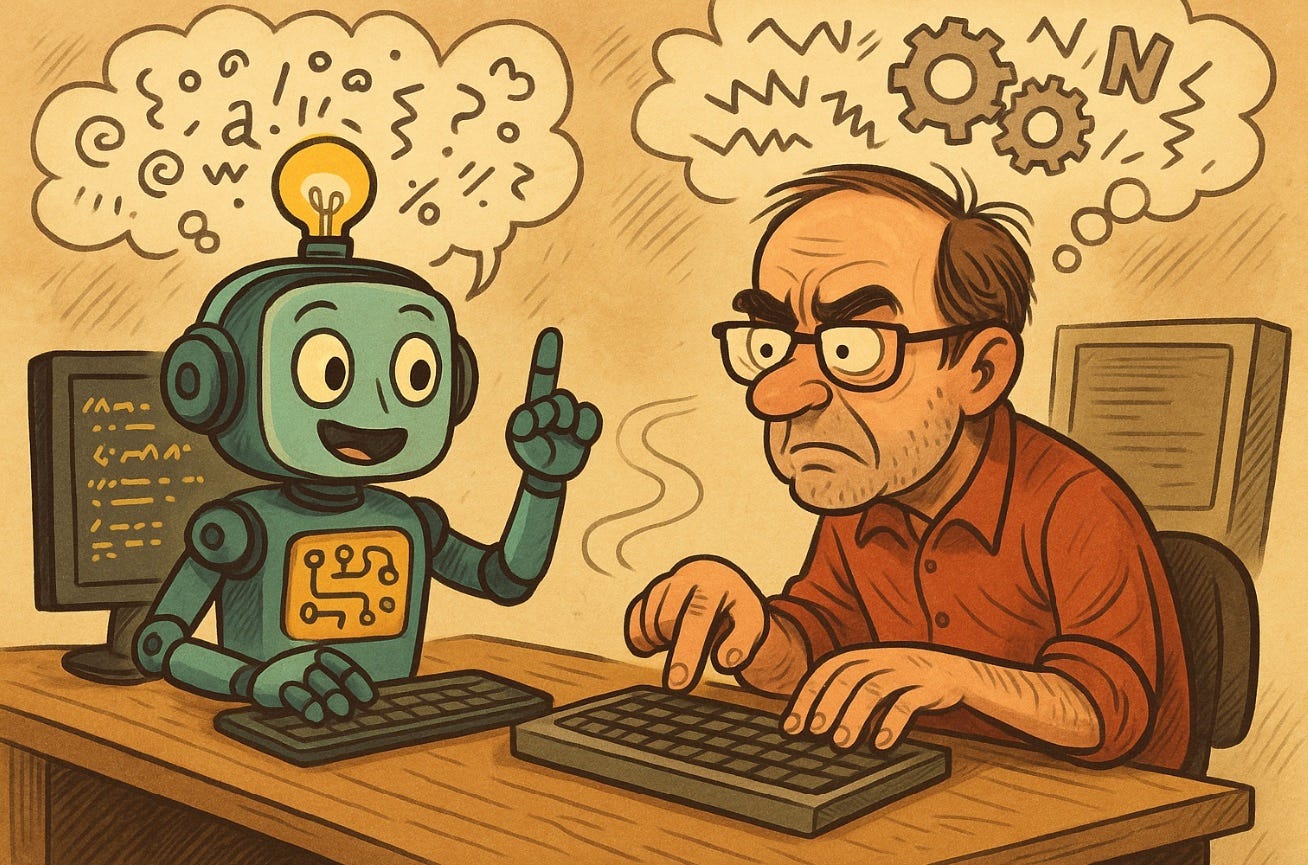The AI Coding Reality Check: Two Observations That Don’t Fit the Hype
After more than two decades in tech, I’ve seen every so-called revolution promise to democratize software development. First it was low code, then no code, and yes, we got caught in that hype too. Now the same narrative is repeating with AI coding and “vibe coding.” The story goes that everyone will become a developer and that AI will eliminate the need for technical knowledge. But the numbers, my network, and my own use of these tools tell a different story.
Observation 1: It’s Still Mostly the Same People
The hype says AI coding is opening the doors to outsiders. The data says otherwise.
Lovable, one of the fastest-growing AI coding platforms, reached about $17M ARR within its first three months according to April 2025 reports. By July 2025, just eight months after launch, it had already crossed $100M ARR, an almost unprecedented growth rate. In a recent podcast with Harry Stebbings, founder Anton Osika mentioned that around 80% of their paying users are building complicated products. That strongly suggests the majority are not beginners but experienced people in tech who know how to structure and ship complex applications.
GitHub Copilot has surpassed 20 million all-time users and is being adopted by over 90% of Fortune 100 companies. While it has been shown to benefit developers of all skill levels, its features and professional integrations make it a standard tool for experienced developers and teams in corporate environments.
This matches every tech adoption cycle I’ve lived through. PCs were first used by hobbyists and engineers, then mainstream. The internet started with academics and techies before reaching consumers. Cloud was first an enterprise IT story. Each time, the insiders adopt first, and outsiders follow years later once the tools are simplified.
In my own case, I’ve been a tech founder for more than 2 decades, but never wrote production code myself. With AI, I now enjoy building small products directly, and I see other founders in my network doing the same. But I have yet to see someone with zero tech background suddenly become a product builder through AI alone. The barrier may be lower, but domain knowledge still matters.
The “death of the junior developer” debate also connects here. Job listings for junior roles fell about 30% in the past year, and coding bootcamps are closing or shrinking. Launch Academy even paused enrollment, citing weak job demand. But if we’re honest, junior roles were always fake. They were paid training programs, where juniors contributed little while seniors carried the load. Now it’s shifting back to a more straightforward expectation: if you want to be a developer, you learn the craft first, like any other profession. AI can speed that up, but it doesn’t replace competence.
Observation 2: Smarter Models, Worse at Following Instructions
The second pattern is about the models themselves. The “newer, smarter” ones are often worse at simple tasks.
A Stanford study tracked GPT-4’s accuracy: in March 2023 it solved prime number identification with 97.6% accuracy, but by June it dropped to 2.4% on the same task.
UC Santa Barbara research found that reasoning models overthink, burning tokens and sometimes making performance worse on trivial problems.
Anthropic’s studies show that extended reasoning can distract models with irrelevant details, leading them to miss obvious answers.
I see the same thing in my daily use. The older models behaved like perfect assistants, doing exactly what you asked without hesitation. They were almost ideal simple task doers. The newer ones act more like people who overthink, showing their reasoning, wandering off, and often failing to follow the instructions as written. Sometimes you just want the job done in the exact format you asked for, not a long explanation of how they got there.
Take a simple case: asking for a block of code in a specific format. Older models would just give you the code. Newer ones might add commentary, restructure parts you didn’t ask for, or even “improve” things that didn’t need improving. The same happens with basic arithmetic or direct yes/no questions, they sometimes bury the answer inside a longer reasoning chain.
Is that entirely bad? Not really. When the problem is complex, the extra reasoning can help. But when the task is straightforward, this “intelligence” becomes a problem. The tradeoff is clear: the more the models “think,” the less reliable they are at just executing. That tension, between wanting a smart partner and needing a precise tool, feels like the core issue with AI models right now. It is also the reason why I still continue using older models for developing products, because they simply do the job as instructed without getting in the way.
The Bottom Line
AI coding tools are transformative, but not in the way headlines suggest. They are making technical professionals far more productive. A GitHub study showed developers using Copilot completed tasks 55% faster, with higher satisfaction. That’s real impact.
But we’re not seeing a new class of citizen developers flooding the industry. We’re seeing the same insiders move faster, while the entry-level path is shrinking. At the same time, the models are shifting from obedient tools to imperfect reasoners. Whether that tradeoff is progress or regression depends on the task.
The real skill today isn’t just prompting. It’s knowing the problem, the architecture, the user need, and how to direct both AI and humans toward solutions. That has always been the essence of building. AI doesn’t change that.

